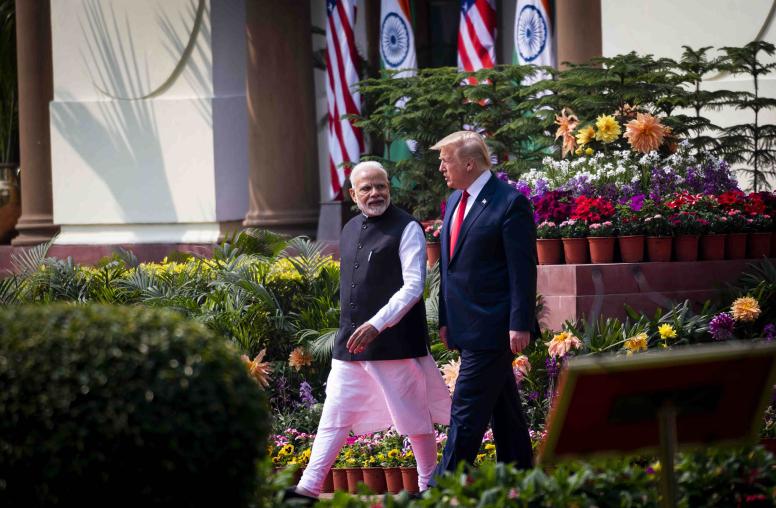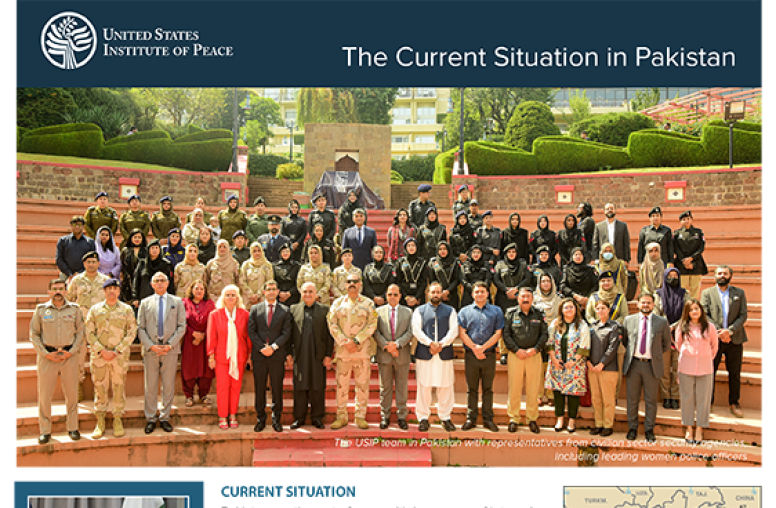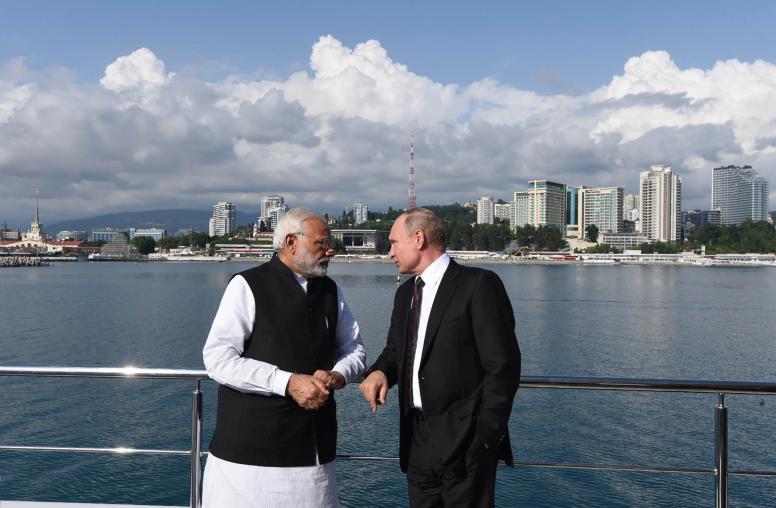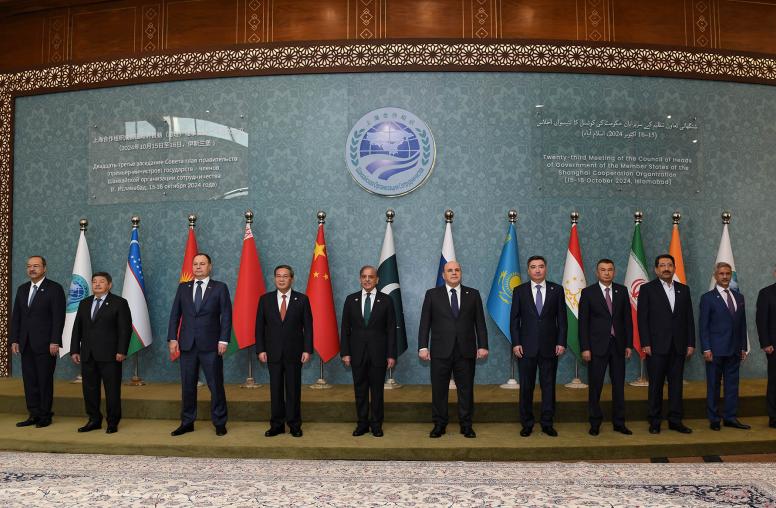Research & Analysis
U.S. Institute of Peace’s articles, reports, tools and other features provide policy analysis, research findings, and practitioner guides. These publications examine critical conflict issues at the center of the Institute’s work to prevent and resolve violent conflict.
The views expressed in these publications are those of the author(s).

What Do Changes in China’s Nuclear Program Mean for India?
At the end of 2024, the annual U.S. Department of Defense report on military and security developments in China reinforced evolving assessments of China’s rapid nuclear expansion with an alarming projection: The U.S. expects China to have 1,000 nuclear warheads by 2030 despite having maintained a nuclear arsenal of approximately 300 warheads for decades.

Modi’s Washington Visit Signals U.S.-India Ties Will Continue Upswing
Last week, Indian Prime Minister Narendra Modi’s visit to Washington marked the fourth meeting between U.S. President Donald Trump and a foreign leader since the start of the new administration. Despite differences over tariffs, Modi’s trip signaled that U.S.-Indian relations will continue along the positive trajectory seen in recent years, particularly in defense and technology cooperation. Trump made clear that he sees value in India’s role as a counterweight to China, but that he also views Delhi as an important player and key partner outside the context of strategic rivalry.

The Current Situation in Pakistan
Pakistan continues to face multiple sources of internal and external conflict. Extremism and intolerance of diversity and dissent have grown, fuelled by a narrow vision of Pakistan’s national identity, and are threatening the country’s prospects for social cohesion and stability.

I2U2: India’s Diplomatic Tool for a Changing World Order
Using I2U2 as its main case study, this discussion paper looks specifically at New Delhi’s rationale for pursuing minilaterals that extend beyond bilateral ties and avoid the rigidities associated with formal multilateral groupings. I2U2 is the first minilateral involving India and the United States in the Middle East and also offers an example of how the two countries may work cooperatively on regional initiatives that complement one another’s strategic and economic interests.

Assessing India’s Perceptions of China’s Nuclear Expansion
China’s ongoing expansion of its nuclear arsenal may be aimed at eventually achieving nuclear parity with the United States. But regardless of the rationale, China’s nuclear expansion, along with possible changes to its nuclear doctrine, are of great concern to India, its neighbor in South Asia. This report—based on interviews with nearly two dozen Indian security experts, including former military and government officials—assesses India’s strategic thinking on China’s nuclear expansion, and what consequences it may have for India’s own nuclear development and US interests in Asia.

Can India Advance Peace in Ukraine?
Since the start of Russia’s war in Ukraine, India has worked to protect its strategic relationship with Russia while maintaining its burgeoning ties with the United States and Europe. India’s balancing act was on display earlier this year when Prime Minister Narendra Modi visited Russia in July and made a historic trip to Ukraine the following month. Modi has portrayed a neutral stance on the Ukraine war and positioned India as a key player in any potential peace process.

India on One Side, China on the Other: Small-State Security in the Himalayas
While much attention has been given to competition in the Indo-Pacific, the Himalayan landlocked countries of Nepal and Bhutan have been navigating their foreign policy and domestic priorities amid heightened global competition — especially between their regional neighbors India and China — while also pursuing critical economic and development needs.

How the India-China Border Deal Impacts Their Ties and the U.S.
Since a 2020 clash between Indian and Chinese troops along their countries’ long disputed border, known as the Line of Actual Control (LAC), friction has mounted between the two Asian powers. But the two sides reached a deal in late October to de-escalate tensions. Although the details remain murky, India and China have already pulled back troops from two key flashpoint areas on the Himalayan frontier. Still, it remains to be seen what this means for the broader, frosty India-China relationship. The U.S. and India have significantly strengthened security ties in recent years, in part responding to China’s rise and aggressive behavior in the region. So, Washington will be watching closely to see what comes next.

Connecting West and East: Indian Ocean Security and the U.S. Indo-Pacific Strategy
A casual observer could be forgiven for thinking that the U.S. does not care about the Indian Ocean. Even after a U.S. focus on the Indo-Pacific emerged in 2017, only a single substantive mention of the Indian Ocean appears in each of the three high-level U.S. strategy documents released in 2022: National Security Strategy, National Defense Strategy, and Indo-Pacific Strategy (IPS). Instead, most of the attention to the Indian Ocean segment of the Indo-Pacific is focused on India, which has become a key U.S. partner and has arguably been the driving factor in the shift in U.S. strategy from the “Asia-Pacific” toward the Indo-Pacific.

At SCO, Pakistan Promotes Relevance as China Projects Influence
Last week, Pakistan hosted leaders from China, Russia, India, Uzbekistan, Kazakhstan, Kyrgyzstan, Tajikistan, Iran and Belarus for the 23rd Shanghai Cooperation Organization (SCO) summit. While the lead-up to the summit highlighted the constraints that Pakistan’s internal troubles place on its ability to play an active role in global diplomacy, Islamabad was able to sidestep any serious diplomatic faux pas. India’s attendance may have left a door cracked to dialogue between Pakistan and its neighboring rival.